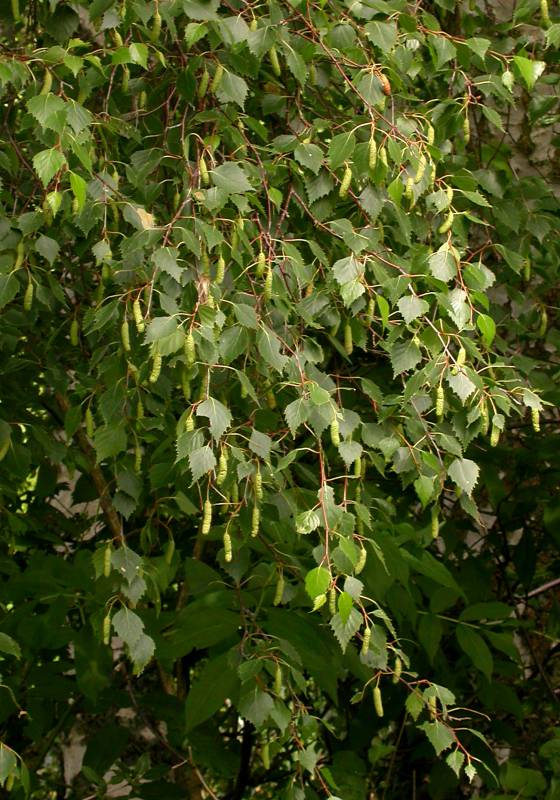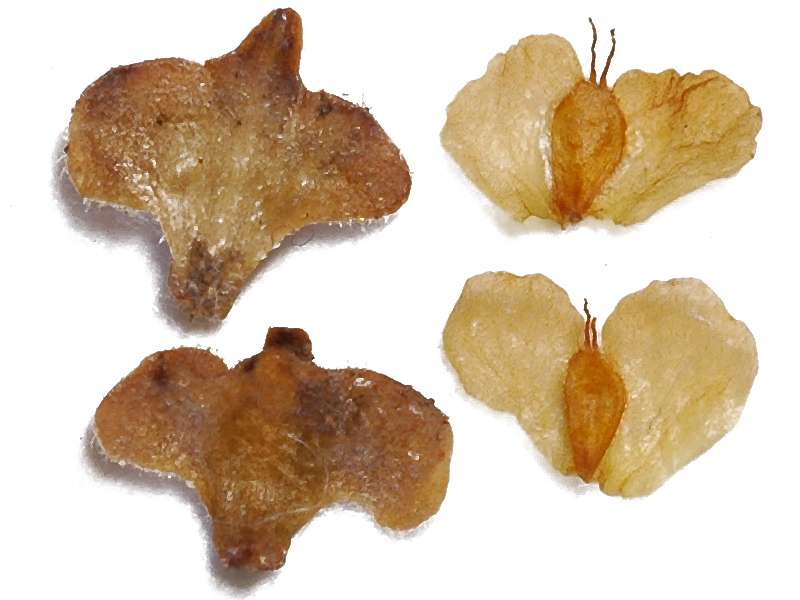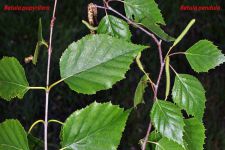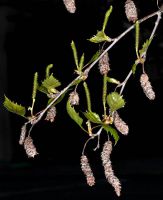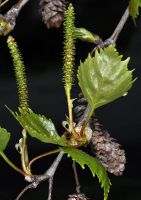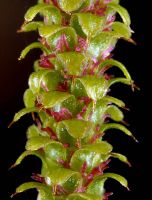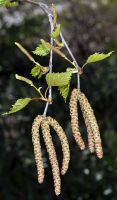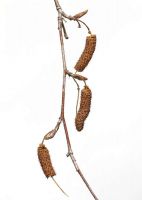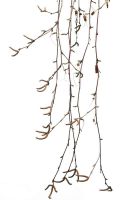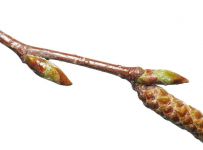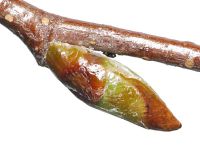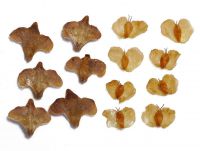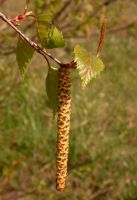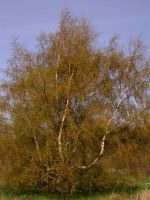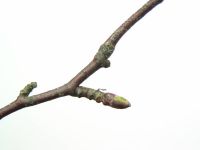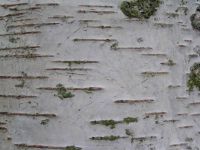Distribution: Occurring chiefly west of the Cascades crest in Washington; southern British Columbia to Oregon; also in northeastern North America.
Habitat: Disturbed areas associated with urban and suburban development where the trees escape from cultivation.
Flowers: April-May
Origin: Introduced from Eurasia
Growth Duration: Perennial
Conservation Status: Not of concern
Pollination: Wind
Monoecious, deciduous trees to 25 m., trunks usually several, the crowns spreading; bark of mature trees creamy to silvery-white, smooth, peeling in long strips; lenticels dark; branches pendulous, twigs glabrous, dotted with small, resinous glands.
Leaf blades broadly ovate to rhombic, 3-7 cm. long and 2.5-5 cm. wide, the base wedge-shaped, the margins sharply double serrate, the tip acuminate, surfaces glabrous to sparsely pubescent.
Staminate catkins 3 per scale, pendulous; pistillate catkins 3 per scale, erect, cylindric, 2-3.5 cm. long, the scales 3-lobed, the lateral lobes broad and rounded, much longer that the central lobe.
Samaras with wings much broader than bodies, broadest in the center.
Publication: Tent. Fl. Germ. 1: 405. 1788.
PNW Herbaria: Specimen records of Betula pendula in the Consortium of Pacific Northwest Herbaria database.
WA Flora Checklist: Betula pendula checklist entry.
OregonFlora: Betula pendula information.
E-Flora BC: Betula pendula atlas page.
CalPhotos: Betula pendula photos.
USDA Plants: Betula pendula information.


